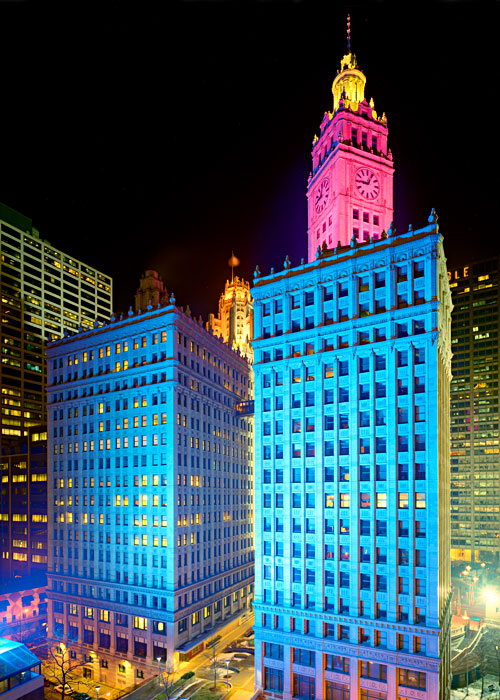The USGBC released its 2011 list of top 10 states for LEED-certified commercial and institutional green buildings per capita, based on the U.S. 2010 Census information. The District of Columbia leads the nation, with more than 31 square feet of LEED-certified space per person in 2011, with Colorado being the leading state, with 2.74 square feet per person in 2011.
Other top states include Illinois, Virginia and Washington, with 2.69, 2.42 and 2.18 square feet of LEED-certified space per person, respectively. The top LEED states per capita, including the District of Columbia.
Notable newly certified projects in 2011 include the Treasury Building in Washington, D.C., which is distinguished as the oldest LEED-certified project in the world; the LEED-Platinum Casey Middle School in Boulder, Colo.; the iconic Wrigley Building in Chicago, Ill.; Frito-Lay in Lynchburg, Va., which earned LEED Gold for the operations and maintenance of an existing building; the LEED Silver Hard Rock Café in Seattle, Wash.; Anne Arundel Medical Center in Annapolis, Md.; Yawkey Distribution Center of The Greater Boston Food Bank in Mass.; the LEED Gold Austin Convention Center in TX; SFO's LEED Gold Terminal 2 in San Francisco, Calif.; the LEED-Platinum Hotel Skylar in Syracuse, N.Y.; and the LEED Platinum Marquette Plaza in Minneapolis, Minn.
In December 2011, USGBC announced that LEED-certified existing buildings outpaced their newly built counterparts by 15 million square feet on a cumulative basis. A focus on heightened building performance through green operations and maintenance is essential to cost-effectively driving improvements in the economy and the environment.
|
|
Sq. ft. of space to earn LEED-certification in 2011 |
Per capita |
|
District of Columbia |
18,954,022 |
31.50 |
|
Colorado |
13,803,113 |
2.74 |
|
Illinois |
34,567,585 |
2.69 |
|
Virginia |
19,358,193 |
2.42 |
|
Washington |
14,667,558 |
2.18 |
|
Maryland |
11,970,869 |
2.07 |
|
Massachusetts |
13,087,625 |
2.00 |
|
Texas |
50,001,476 |
1.99 |
|
California |
71,551,296 |
1.92 |
|
New York |
36,538,981 |
1.89 |
|
Minnesota |
9,591,445 |
1.81 |
Related Stories
Building Team Awards | Apr 10, 2015
New arts venue reinvigorates Virginia Tech's campus
The STV-led Building Team creates a world-class performance and arts venue with learning and entrepreneurial dimensions.
BIM and Information Technology | Apr 9, 2015
A carboard box by Google can bring virtual reality to architecture
The global search engine giant has launched a new product, Google Cardboard, that easily allows users to experience virtual reality.
Building Team Awards | Apr 9, 2015
Multifaced fitness center becomes campus landmark
A sloped running track and open-concept design put this Building Team to the test.
Building Team Awards | Apr 9, 2015
Nation's first LEED-certified bus depot
A bus garage in Harlem shows that even the most mundane of facilities can strut its environmentally sensitive stuff.
Building Team Awards | Apr 9, 2015
Setting the bar for port-of-entry design
Whenever you eat a tomato from Mexico, there’s a one-in-three chance it came through this LEED Gold gateway.
Building Team Awards | Apr 9, 2015
Big D’s billion-dollar baby: New Parkland Hospital Tops the Chart | BD+C
Dallas’s new $1.27 billion public hospital preserves an important civic anchor, Texas-style.
Building Team Awards | Apr 9, 2015
IPD-driven fusion facility serves science and student life in Chicago
In dire need of modern science labs and a student union, North Park University built both—in the same building.
Building Team Awards | Apr 9, 2015
‘Prudent, not opulent’ sets the tone for this Catholic hospital
This Building Team stuck with a project for seven years to get a new hospital built for a faithful client.
Building Team Awards | Apr 9, 2015
9/11 museum triumphs over controversy
The Building Team for this highly visible project had much more than design, engineering, and construction problems to deal with.
Building Team Awards | Apr 7, 2015
Unique test facility will help make wind power more feasible
A new facility at Clemson University makes it possible to test the huge stresses that large-scale wind turbines must be able to withstand.

















